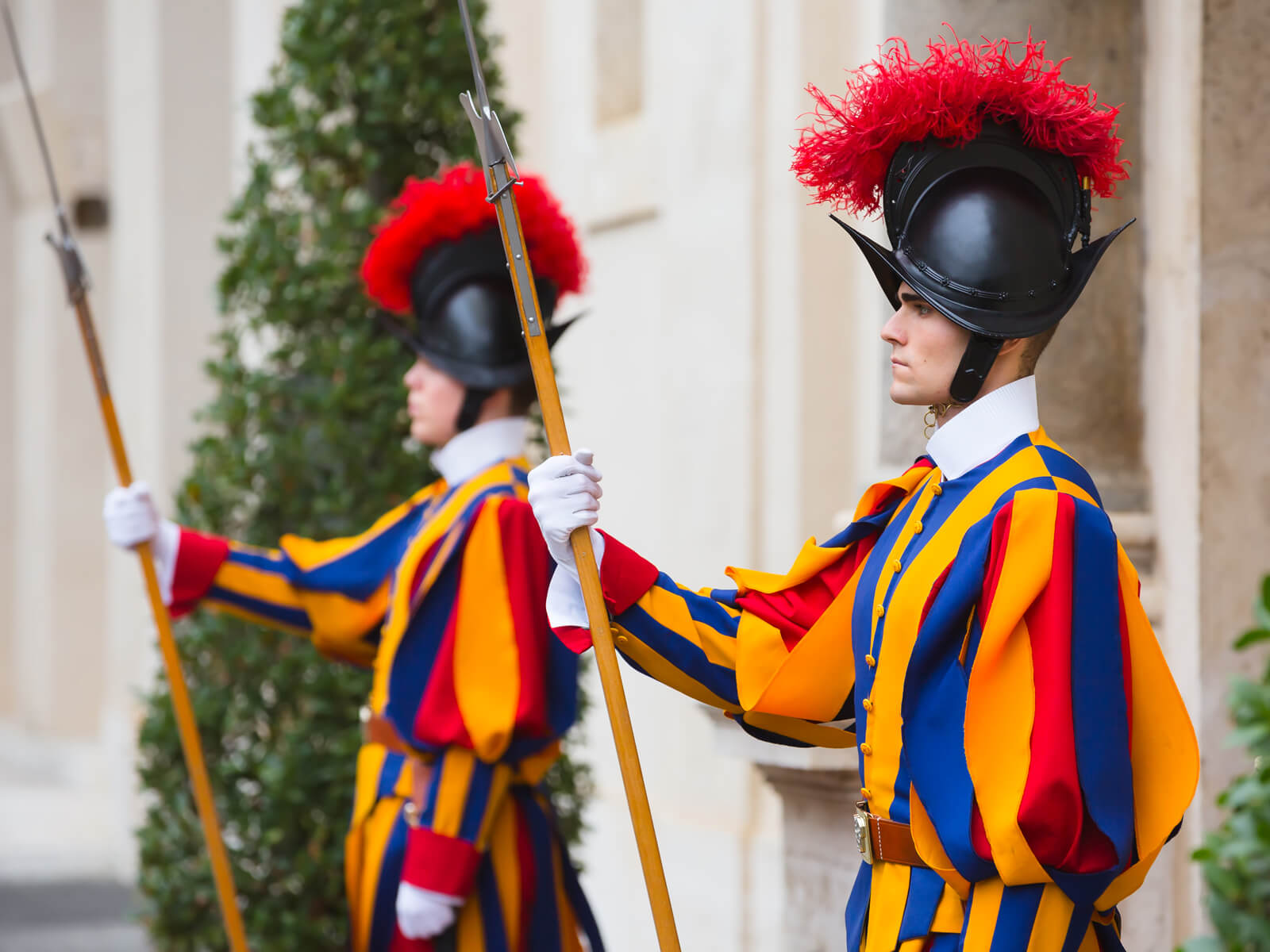
The Pontifical Swiss Guards, the last mercenary troops of Switzerland, have a long-standing service to the Vatican.
Alongside their Italian soldiers stand the Vatican's Corps of Gendarmes, the Swiss soldiers protecting the Pope. Tourists and pilgrims who flock to Rome see these colorful men and wonder: Who really are the Swiss guards?
Here are 13 facts about the Swiss guards you didn't know:
There are strict admission requirements to become a Swiss guard.
Several strict criteria must be met before applying for the Pontifical Swiss Guard. In short, each recruit must be a single male of Swiss citizenship standing at least 174 cm (5’ 8 “) tall. They must be between 19 and 30 years old and hold a high school degree or professional diploma.
Each recruit must be a faithful Roman Catholic, as his hometown’s Parish Priest endorsed.
Recruits must have completed basic military training in Switzerland to continue to the first five weeks of training with the guards in Rome.
After this training period, the Swiss soldiers are called Halberdiers, owing to their halberds, the primary weapons the Swiss mercenaries used in the 14th and 15th centuries.
Once sworn in, the Halberdiers and their parents get a private audience with the Pope, receiving a personal blessing.
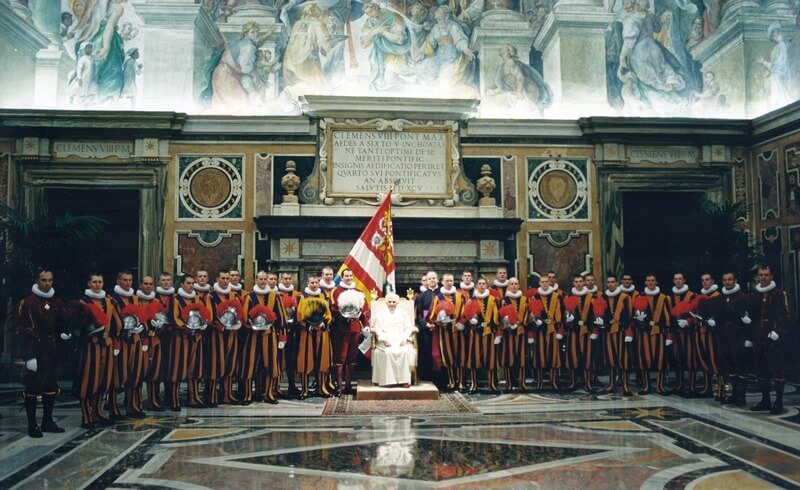
A Swiss guard's shortest contract is 25 months.
Once a Halberdier starts his contract, he will attend Italian lessons if he does not already speak the language. By the end of the first year of service, the Halberdier is usually ready for guard duty at the main gates of Vatican City, dealing with everyday tourists (and often VIP guests, too!)
Facts about the Swiss Guard Uniform
The everyday uniform of the Swiss Guard is the blue duty uniform.
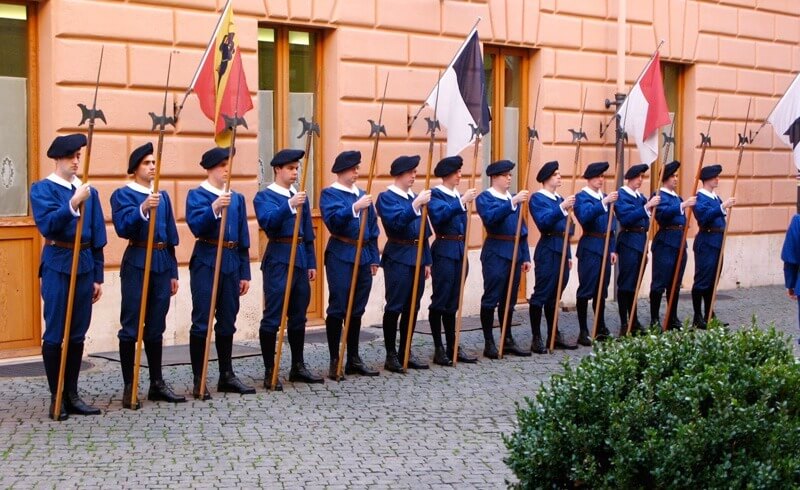
The colorful uniforms in the Medici colors of red, yellow, and blue, known as Gala Uniforms, were used only after 1910.
It's a myth that Michelangelo designed the Swiss Guard uniforms.
Each Gala Uniform is sewn by the tailors inside the Vatican barracks, tailor-made to fit each guard.
This process takes at least 30 hours per uniform!
After completing their service, the guards' personal uniforms are destroyed, never to be used again.
Some of today's Vatican guard armor is original from the 15th century.
Specialized blacksmiths make the new armor to replace the ones that can no longer be renewed.
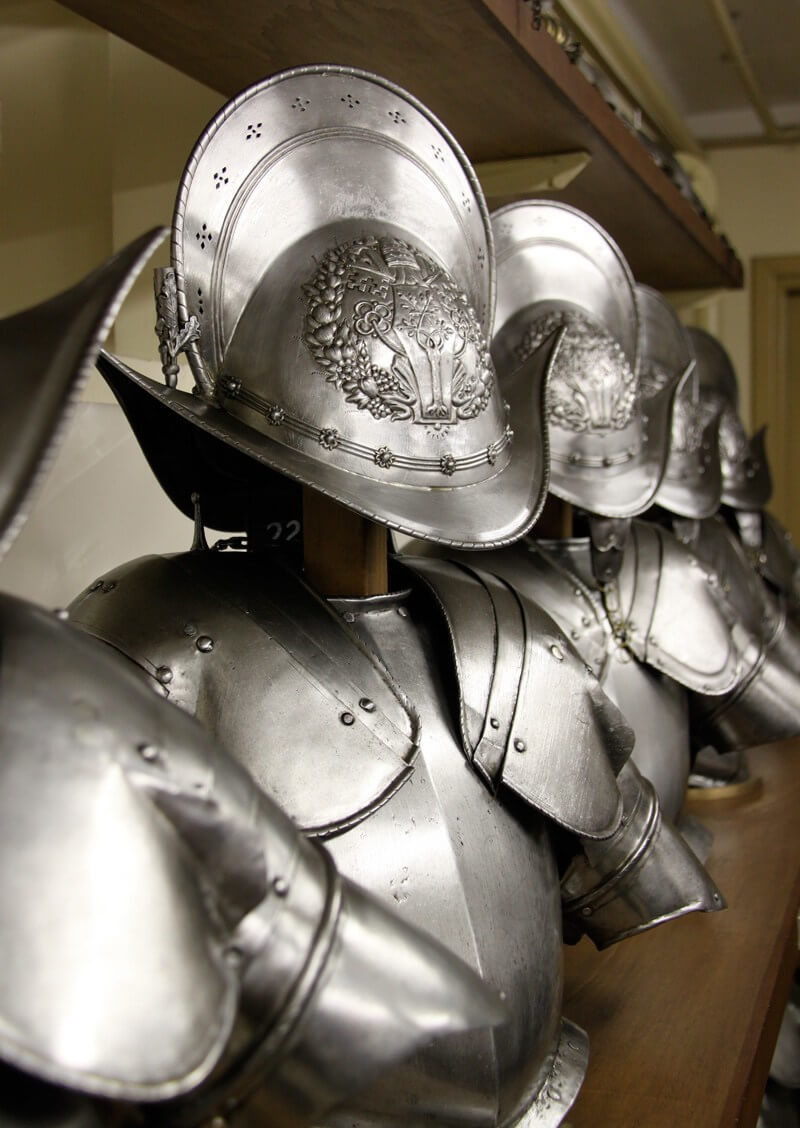
The morion helmet, worn with dyed ostrich feathers, holds the family sigil of Pope Julius II, the oak tree.
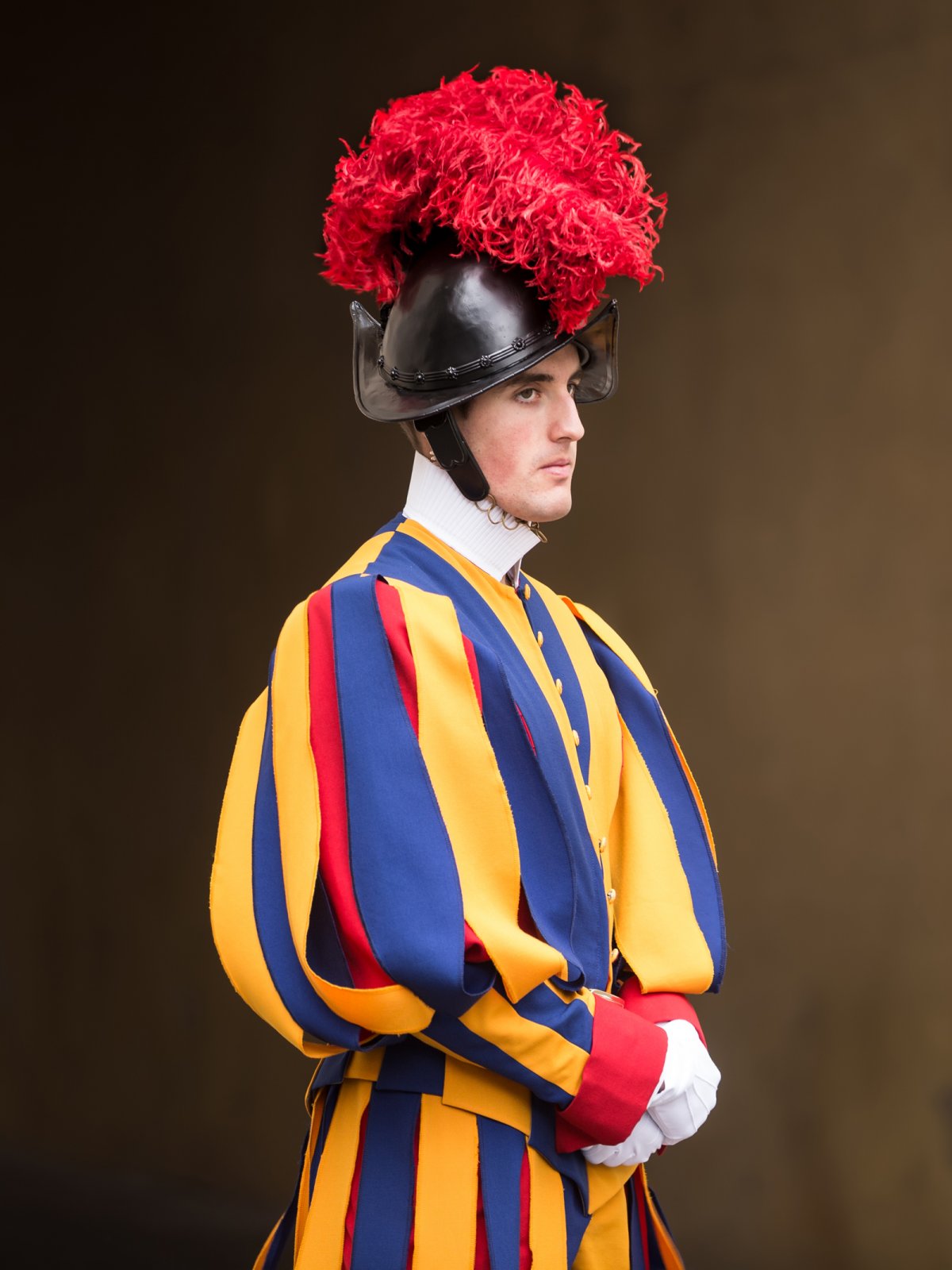
When a Swiss Guard stands still with the halberd and is not talking, he is on Honor Duty.
This posture signifies that a Vatican guard should not be approached.
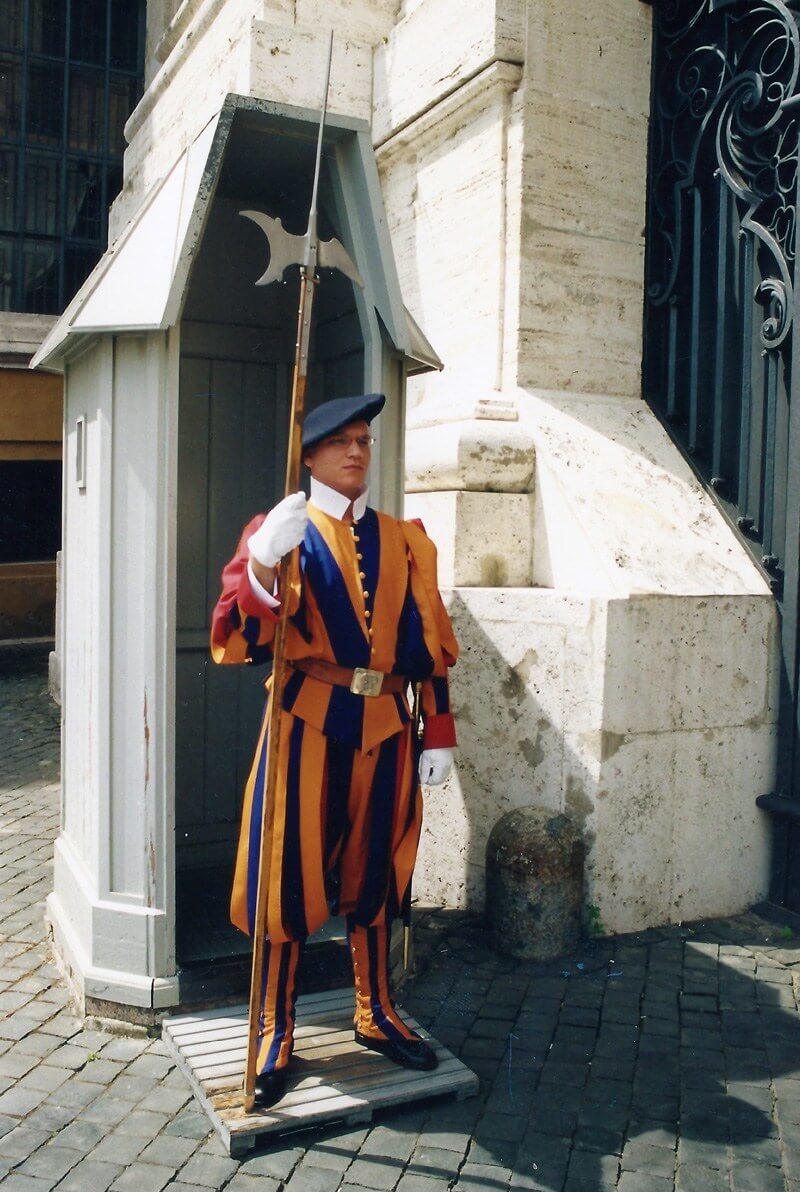
But when a Swiss Guard stands with folded hands and faces the people, he is on Guard Duty.
This means that he may be approached for questions or sometimes for pictures (if you ask nicely).
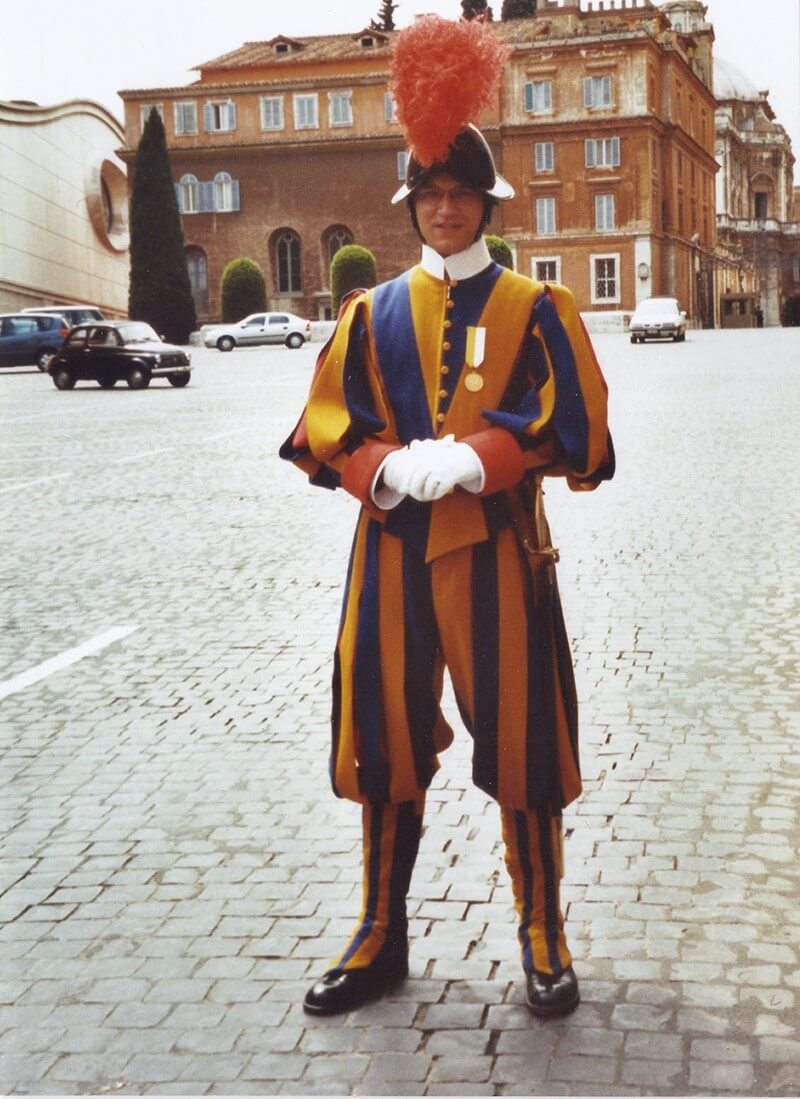
More Facts about the Swiss Guards
Got your Swiss Guard facts straight, but are you still curious? Read why May 6 is a Swiss Celebration in Rome, and check out eight more facts about the Swiss guards.
What Do the Swiss Guards Do When the Pope Dies?
Fun fact: Did you know that a former Swiss Guard released a Vatican Christmas Cookbook with recipes?



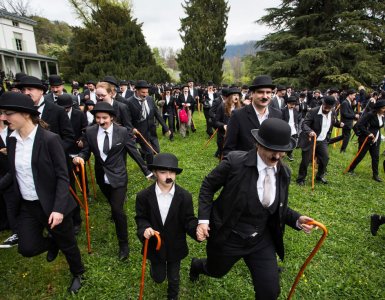

[…] 13 facts about the Swiss guards you probably did not know (Newly Swissed) – Who are the Swiss guards? (Newly […]
[…] 13 facts about the Swiss guards you probably didn't know (Newly Swissed) – About the swearing-in ceremony on May 6 (Newly Swissed) – History of the Uniform […]